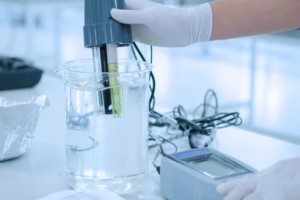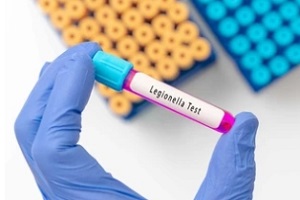 Legionella is a dangerous form of water-borne bacteria that can easily accumulate anywhere that water pools, collects and sits stagnant. Worse yet, Legionella bacteria can cause a serious illness called Legionnaires’ disease. Symptoms of Legionnaires’ disease include fever, muscle aches, and coughing.
Legionella is a dangerous form of water-borne bacteria that can easily accumulate anywhere that water pools, collects and sits stagnant. Worse yet, Legionella bacteria can cause a serious illness called Legionnaires’ disease. Symptoms of Legionnaires’ disease include fever, muscle aches, and coughing.
If left untreated, Legionnaires’ disease can be fatal. This makes it extremely important for building managers and cooling tower operators to understand where this bacteria builds up and how to prevent its spreading.
Where Does Legionella Commonly Develop?
Legionella bacteria is a type of bacteria that commonly develops in environments where there is a lot of moisture. This can include hot tubs, water features, hot water systems, air conditioning units, and cooling towers. In fact, Legionella bacteria is one of the leading causes of waterborne diseases in the United States. Because it can be so dangerous, it’s important to be aware of the signs and symptoms of Legionella infection, as well as how to prevent it from developing in your environment.
Legionella bacteria commonly develop in warm environments, such as water heaters, cooling towers, and large plumbing systems. The bacteria can also be found in soil and on surfaces that are wet. Outbreaks of Legionnaires’ disease have been linked to a number of different environmental sources, including air-conditioning cooling towers, whirlpool spas, hot tubs, humidifiers, potting soils, and decorative fountains.
How To Prevent Legionella Bacteria Buildup in Cooling Towers
Cooling towers provide an ideal environment for the proliferation of Legionella bacteria, as the warm, moist air creates an optimal breeding ground. In order to prevent Legionella buildup and proliferation, cooling tower operators should take the following steps:
Regularly clean and disinfect the cooling tower basin and all components with a biocide that is effective against Legionella bacteria
The best way to clean cooling towers to prevent Legionella bacteria from developing is by using a chlorine-based disinfectant. Oxidizing biocides are good choices because it is a powerful oxidizing agent that can kill many types of bacteria. Some forms can also be used in low concentrations, so it is safe for humans and the environment.
Monitor the water temperature and make sure it does not exceed 73°F
Water temperature is an important factor in the development of Legionella bacteria. Legionella thrives in warm water and can grow and spread rapidly in water that is between 70 and 12045 degrees Fahrenheit. That’s why it’s important to keep water below 70 degrees Fahrenheit to prevent the growth of Legionella bacteria.
Keep the water pH between 6.8 and 8.5
 Legionella bacteria commonly grow in environments with a pH of 7.2 to 7.4. This pH range is slightly acidic, which makes it impossible for bacteria to grow and multiply. It is important to maintain this range in order to reduce the risk of Legionella bacteria developing. In fact, if the pH falls outside of this range, Legionella bacteria can begin to grow at an alarming rate.
Legionella bacteria commonly grow in environments with a pH of 7.2 to 7.4. This pH range is slightly acidic, which makes it impossible for bacteria to grow and multiply. It is important to maintain this range in order to reduce the risk of Legionella bacteria developing. In fact, if the pH falls outside of this range, Legionella bacteria can begin to grow at an alarming rate.
Maintaining a proper pH is not difficult, and can be accomplished through a number of methods. Professional cooling tower services use chemicals and other methods to ensure that the pH levels remain within a safe range. Additionally, there are many commercial products available that can help adjust the pH. It is important to read the instructions carefully, as each product will have different requirements.
Use corrosion inhibitors to protect the metal surfaces in the cooling tower
One way that corrosion inhibitors help to prevent Legionella bacteria from developing is by forming a protective barrier on metal surfaces. This barrier helps to prevent the metal from corroding and breaking down, which creates a hospitable environment for Legionella bacteria to grow. Additionally, corrosion inhibitors can also help to remove any organic material that may be present on the metal surface, which can also create a favorable environment for Legionella bacteria to grow.
Test the water for Legionella bacteria on a regular basis and take corrective action if necessary
Water testing and analysis are important to prevent the spread of Legionella bacteria. Legionella thrives in warm, moist environments, so regular water testing can help identify potential problem areas before they become breeding grounds for the bacteria. By identifying and addressing potential sources of Legionella contamination, facilities can help minimize the risk of outbreaks.
How To Detect Legionella Buildups
Detecting Legionella bacteria in your building or cooling tower can be done through a variety of means. One method is to test the water for the presence of bacteria. This can be done by taking water samples and culturing them in a laboratory setting.
 Another method is to use immunofluorescence assays to detect antibodies to Legionella bacteria in water samples. If Legionella bacteria are present, then they will glow when exposed to fluorescent light. Businesses that operate cooling towers and other water-using equipment should regularly test their water for the presence of Legionella bacteria.
Another method is to use immunofluorescence assays to detect antibodies to Legionella bacteria in water samples. If Legionella bacteria are present, then they will glow when exposed to fluorescent light. Businesses that operate cooling towers and other water-using equipment should regularly test their water for the presence of Legionella bacteria.
This helps protect people from exposure to this deadly bacteria and minimizes the risk of outbreaks. Legionella bacteria can develop and proliferate very quickly if your water systems are not regularly screened, which makes it essential to have monthly checkups to ensure that your vulnerable areas are free and clear of this potentially deadly bacteria.
Trust the Water Maintenance and Treatment Experts at Tower Water
Water maintenance teams are crucial in identifying and preventing Legionella buildups. By regularly inspecting water systems and keeping records of any irregularities, water maintenance teams can help to prevent these Legionella bacteria from becoming a problem. Additionally, if a Legionella buildup is identified, water maintenance teams can work to remediate the issue quickly and effectively.
For more information schedule a consultation with us to identify your facility’s vulnerable points, reach out to Tower Water today at 212-518-6475.
